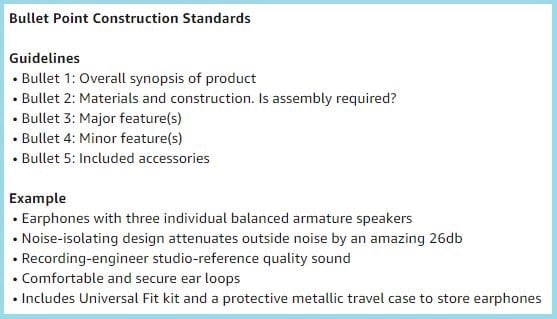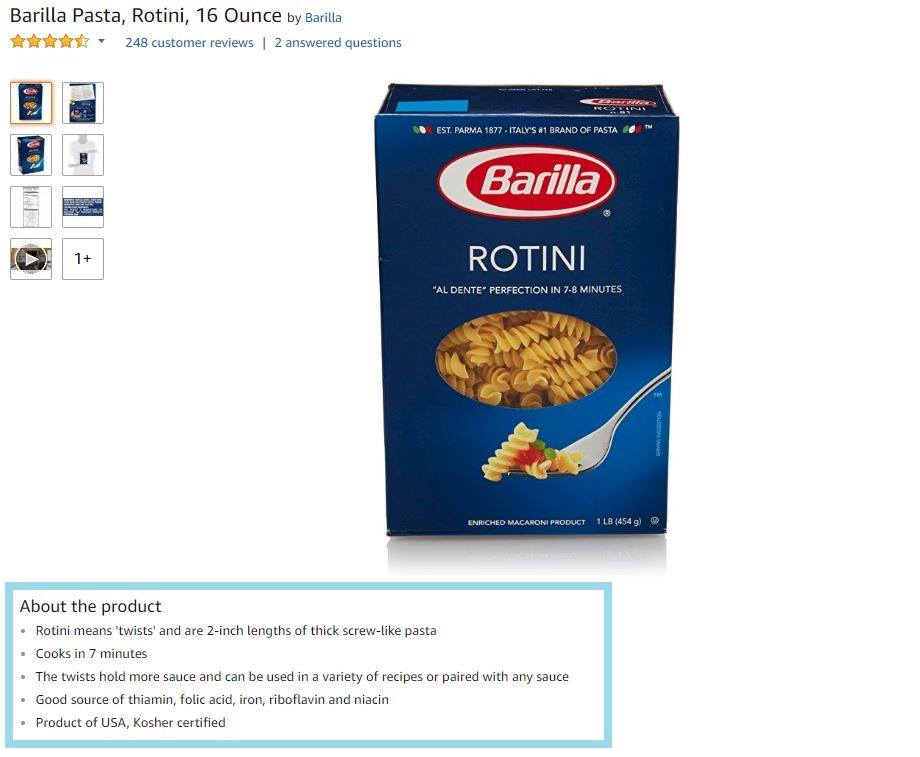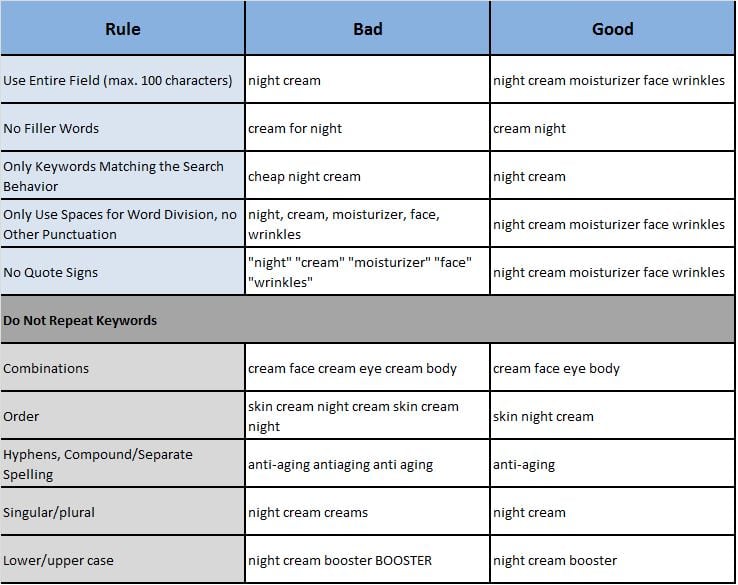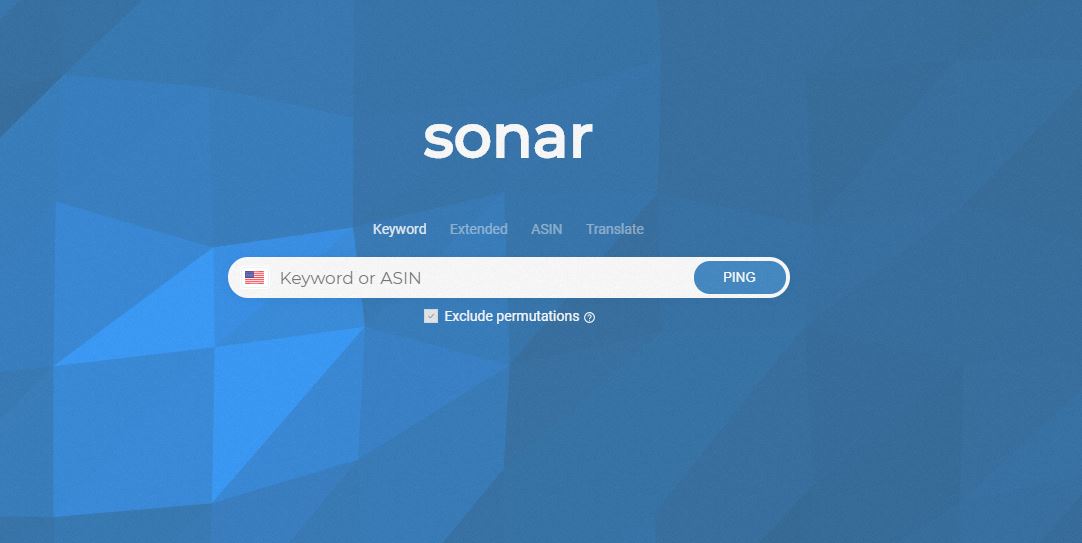Understand one thing about Amazon SEO:
Amazon is a search engine…
and it’s easier to rank for specific Amazon keywords than it is on Google.
But repeating phrases or needlessly stuffing your character count doesn’t work
Let me explain:
Following that type of strategy when you optimize your Amazon keywords on a listing can backfire, hurt your rankings, and ruin your Amazon business.
Before getting into Keyword tools, we should go over the best practices you need to follow:
Here’s What We’re Covering:
- Two Main Ranking Factors for Amazon Keywords
- Let’s Optimize The Product Page to Be More Relevant
- Amazon Keyword Tools
- Complete Amazon Keyword Optimization Example
- Wrapping This Up…
There are Two Ranking Factors We Should Focus on…
Amazon SEO deals with two things:
A relevant product page and conversion rate. Simple right?
So how do we make sure that our page is relevant and people buy?
We focus on two key actions to avoid. One of the actions we can control and one we help the customer control. If we focus on these two general ideas then everything else flows into place.
1. Relevant Listing Keywords…Without Stuffing
Keyword stuffing is shoving as many keywords as possible into a title, bullet, description, or Seller Central back-end. Amazon is stingy with its character counts these days, so every word matters.
Therefore, filling the back-end keywords, your listing title, and other areas with everything that possibly relates to your product means you can send unqualified traffic to your product pages.
2. Reducing “Bounces” on Your Listing
A bounce is when someone clicks on your listing, has a quick look, then leaves because your product isn’t what they thought it would be, Amazon takes note. If too much traffic is bouncing off your page then Amazon will begin to demote your listing in the search results.
After all, Amazon only wants to display listings that convert well and make them money. Because many sellers don’t understand how Amazon’s search engine works, they mistakenly assume it operates like Google. It’s not enough to meet the minimum Amazon image requirements or properly naming the image file with the UPC code you purchased. A listing that converts focuses on each step in the customer journey to try and make the sale.
For the sake of this article we’re focusing on optimizing Amazon keywords for search and customer relevancy:
Let’s Optimize The Product Page To Be More Relevant
Here’s the thing.
Amazon’s #1 concern is sales.
That’s the biggest indicator of your product listing’s success (or failure).
They want listings that are not only optimized for search but have trustworthy and relevant descriptions.
That means keeping the customer foremost in your mind.
Step 1: Title
Pretend you’re shopping for a baby swaddle blanket. Based solely on the title, which of these (taken from actual Amazon listings) would get your click?
Remember that all the words in the title are searchable in any order.
Therefore,
It’s not helpful to repeat full key phrases.
Using this example, reduce the duplication and make room for details that would be helpful to your shoppers.
Bad Title Example:
- Title is stuffed full of key phrases
- The customer is completely ignored because it only repeats variations of search phrases over and over

Keyword Optimized Title Example:
- Offers information that customers want to know in order to encourage them to click the listing.
- The tile is concise and uses keywords naturally.

Check out all the useful information to keep the customer interested:
- Blankets are adjustable
- Come in a 3-pack
- Are soft cotton
Look:
Focusing all your efforts on Amazon keywords is also a one-sided deal.
Amazon will never purchase anything you sell.
Customers (aka humans, shoppers, buyers) are the ones with the credit cards, so you have to pay as much (or more) attention to them as you do to Amazon’s A9 search engine.
Customers are more likely to leave reviews for positive experiences.
Here’s one way the bad title above could be optimized:

We recommend including one to two key phrases. Along with a few individual keywords if there is space. Most importantly, the title has to make sense. Confusing titles are a sure way to turn off shoppers.
2. Key Feature Bullets
Amazon gives you a guideline to what they think makes great featured bullets:

You want to use the key featured bullets section to distinguish your product from other products that are potentially similar. Provide benefits without giving the customer too much information.
Don’t repeat the same keywords or phrases you had in your product title in the featured bullets. There’s no penalty if you do repeat them, but if you have other keywords to use, you’ll be better off using them.

We suggest using 1 key phrase per featured bullet and another few Amazon keywords if there is room. Also, only do it if it doesn’t make the copy sound stupid.
3. Product Description
A study done by Shot Farm said that 30% of people abandon their shopping carts because of poor product descriptions. That’s a large number of people for something that can be easy to fix.
Product descriptions don’t index properly so there is actually no effect on your ranking and is not necessary for Amazon Keyword Optimization. However the product description has a huge impact on relevancy and whether or not your customer stays on your page.

Splitly says it best here: “The product description is where we go deeper, overcome any last objections and entice visitors and tell them to buy now.”
You want to be able to tell a story about why your product is useful and better than other similar ones. This is a section where you can be creative and help build trust with a customer.
5 Amazon Traffic Hacks to Get Your New Product Ranked Fast
4. Search Term
You can optimize the search terms for product listings. Search optimization plays a big role with Amazon keywords because you have the opportunity to provide extra information that can rank your listings organically.
The best part?
You gain the opportunity to be discovered by thousands of more buyers.
Optimizing back-end keywords (as they are sometimes called) may be useful in helping guide the right kind of traffic to your listing.
Why did I bold the word “may”?
Because of the back end fields:
- Are not mandatory (according to Amazon)
- They are not guaranteed to be used
- And are given the least amount of weight when compared to keywords in the copy
To use the precious space with the best results possible, DON’T include the following in your back-end keyword fields:
- Duplicates of keywords/phrases used in other areas of the listing — title, key bullets, description, or brand (yours or competitors’)
- Duplicate words within the Search fields (crunch dog treats, chewy dog treats… use “dog treats” only once)
- Variations on capitalization or spacing such as Dog Treats vs. dog treats or 80mb vs. 80 mb
So the key phrases that are not important enough to make it into your title, bullets, or product description (the leftovers) should fall into the Search Terms section in the back-end.
All the rules are summarized below for the term night cream…

So what’s next?
It’s your turn to figure out the phrases you want your product to rank for. That’s why I included my two favorite keyword research tools for you to check out and put this guide into practice.
Amazon Keyword Tools
Free:

Sonar – (free Amazon keyword research tool) to help you find all the valuable keywords you want your product to rank for. Sonar will automatically provide a search volume estimate for the top keyword recommendations.
Paid:

Merchant Words – They collect searches from real Amazon shoppers. This allows them to quickly spot trends and see what’s in the minds of shoppers — your customers. They offered Startupbros readers a special discount!
Get Merchant Words 70% Off for Life!
Complete Amazon Keyword Optimization Example
For example, if your title is:

And you have 5 key bullets that use the phrases:
- swaddle wrap
- swaddle blanket for toddlers
- baby wrap blanket
- snuggle wrap blanket
- baby swaddle sack
You want to remove all of those words from the Search Terms fields in order to maximize space.
That means none of these words should appear in your back-end keywords:

You get 250 characters (NOT including spaces).
What you can do is go a little broader. For instance, look for synonyms for “baby blanket.” You might consider:
- baby cover
- baby coverlet
- infant/baby throw
- swaddle cover
- infant swaddle blanket
Make certain these are actual synonyms for the product you’re selling.
Go to Amazon and search for these terms.
Do you see swaddle wraps? If not, don’t use these types of phrases. They would most likely drive unqualified traffic to your page.
Wrapping This Up…
I can help guide you through every step of expert-level Amazon keyword optimization research, creating copy and perfecting your listings in the popular Amazon Product Description Boot Camp.
Use Code: BOOT20
For 20% off!
Watch and learn as each section is broken down into easy-to-understand methods. This multi-session, web-based training is specifically designed to help you rank higher, convert better and make more sales.

HI MAM how to sale increase any software you provide
Hi Karon,
What is more important Description or BackEnd Keywords?
Regards,
Peter
Hi,
These two have different functions so they are both important. The description is there to walk your customer deeper into the details of your product while (possibly, but not always) also helping with rankings.
The search terms section is there as a backup for the leftover keyphrases that would not fit into your copy. Its purpose is only search-related.
You need them both.
HI Karon
That’s a well written article and all of it makes sense.. except I am uncertain whether you would use in this instance of “baby” as per your example, over and over in the back end keywords.
As you pointed out we have 250 characters, do we need to repeat the lead word for it to be effective?
Hope that makes sense
Thanks
Jon
Hi,
I’m showing phrases that were researched. You would not include entire phrases in the search terms section. Duplicates would need to be removed.
This is what I stated about duplicates, etc.:
To use the precious space with the best results possible, DON’T include the following in your back-end keyword fields:
Duplicates of keywords/phrases used in other areas of the listing — title, key bullets, description, or brand (yours or competitors’)
Duplicate words within the Search fields (crunch dog treats, chewy dog treats… use “dog treats” only once)
Variations on capitalization or spacing such as Dog Treats vs. dog treats or 80mb vs. 80 mb
You quoted that Use Variations on capitalization or spacing such as Dog Treats vs. dog treats to use precious space with best possible result.
But in the rule diagram to summarize search term at the end it says don’t use Upper/Lower case such as use Night cream booster instead of night cream booster BOOSTER.
how to write correct keyword for table lamp
Awesome article and great knowledge, thank you!
Hey Xiaolin,
Thanks for reading the article and checking it out!
Hi Karon!
Great article – All of the things you mentioned here are super important to maximizing your traffic on Amazon by using keywords.
Great article!
Dalton